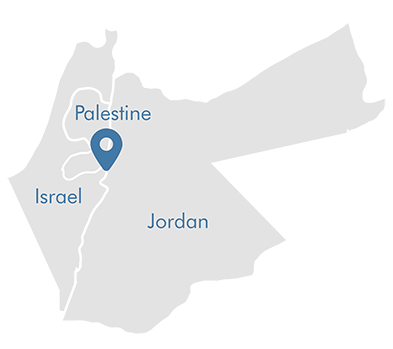ISRAEL, JORDAN & PALESTINE, ASIA
Dead Sea
This hypersaline lake fills a depression of the Jordan Rift Valley. The Dead Sea is the lowest place on earth, with a shoreline 430 meters below mean sea level. The Dead Sea borders Israel, Jordan and the Palestinian-controlled areas of the West Bank. As there is no outlet, the water of the Dead Sea evaporates (about 8 million m³ of water per year), leaving behind salt. The average salinity of the Dead Sea is about 28%. In about 1976, the sea level dropped below the level of an east-west ridge, causing the Dead Sea to split into two parts, a deep northern basin and a much shallower southern basin. The sea level of the northern basin has been falling ever since, and the southern basin would have dried up by now if it were not for the chemical extraction industry pumping water from the northern basin into the southern basin.
What makes it special
The Dead Sea is one of the saltiest bodies of water in the world. The water is so dense with minerals that it is difficult for a person to sink. In fact, it is common for individuals to float on the surface of the water, making it a unique and popular experience for tourists visiting the region.
Protection status
· Ramsar Site 2294, Wetland of International Importance
· Protected Area - Fifa Nature Reserve
· Nature Refuge - Dead Sea Springs
· Nature Reserve – Dead Sea Coast
· Habitat Management Area - (IUCN Category IV)

Biodiversity
Although the Dead Sea bears its name, it harbors biological life, mainly in the form of microorganisms, including halophilic archaea and bacteria that break down saltpetre, sulphur and cellulose. In 2011, scientists discovered a diverse microorganism community that exists near freshwater springs on the sea floor, where it forms mats of algae and bacteria. At 1.000 to 10.000 per milliliter, the concentration of microorganisms in the Dead Sea is significantly lower than in normal seawater. In addition, microbial blooms caused the Dead Sea to turn red in 1992. Some plants with high salt tolerance, so-called halophytes, can also survive in this extreme environment.

Threats
The water level of the Dead Sea is dropping rapidly, with damaging consequences such as the loss of estuarine ecosystems and the formation of salty mud over 300 km². The decreased inflow of freshwater into the lake resulted in the fact that the salinity of the Dead Sea has increased to such a point that even the hypersaline-tolerant bacteria which live in the lake are at risk. The shrinking water table is leading to a drop in groundwater levels, the creation of thousands of sinkholes that pose a threat to infrastructure and safety, negative impacts on tourism and jeopardises jobs in the Dead Sea basin due to severe environmental degradation.
The Living Lakes Network awarded Dead Sea as Threatened Lake of the Year in 2006.

Our Work
The Dead Sea can only be saved through joint efforts of the neighboring countries. In 1994, EcoPeace Middle East was formed by nature conservationists from Israel, Jordan, and Palestine. Besides promoting the sustainable and fair use of all shared water resources, the main focus of EcoPeace is to rehabilitate the Lower Jordan River and prevent the Dead Sea from drying up. In the past, EcoPeace Middle East already implemented a Jordan River Rehabilitation Project


